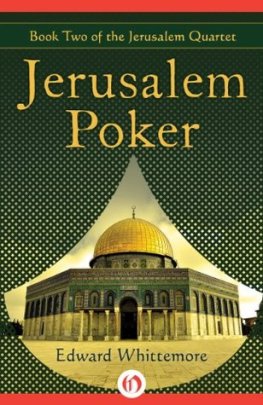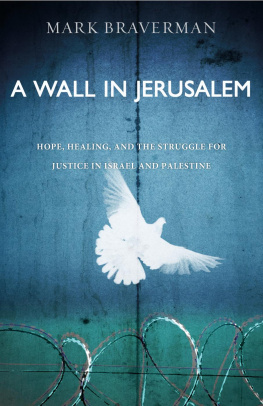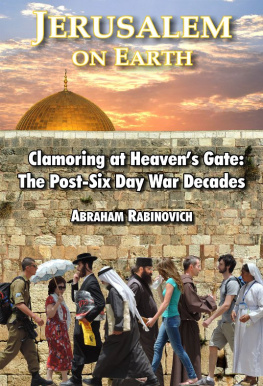The Battle for
Jerusalem

John Hagee

2001 by John C. Hagee
Previously published as Attack on America, 2001.
All rights reserved. Written permission must be secured from the publisher to use or reproduce any part of this book, except for brief quotations in critical reviews or articles.
Published in Nashville, Tennessee, by Thomas Nelson, Inc.
Unless otherwise noted, Scripture quotations are from the NEW KING JAMES VERSION. 1979, 1980, 1982, 1990, 1994 by Thomas Nelson, Inc.
Scripture quotations noted KJV are from the KING JAMES VERSION.
Scripture quotations noted NIV are from the HOLY BIBLE: NEW INTERNATIONAL VERSION. 1973, 1978, 1984 by International Bible Society. Used by permission of Zondervan Publishing House. All rights reserved.
Scripture quotations noted NLT are from the Holy Bible, New Living Translation, 1996. Used by permission of Tyndale House Publishers, Inc., Wheaton, Illinois 60189. All rights reserved.
Library of Congress Cataloging-in-Publication Data
Hagee, John.
The battle for Jerusalem / John Hagee.
p. cm.
Includes bibliographical references.
ISBN 978-0-7852-6379-1
1. BiblePropheciesJerusalem. 2. Jerusalem in the Bible. 3. Jerusalem. I. Title.
BS649.J38 H33 2001
263'.042569442dc21
2001018035
Printed in the United States of America
08 09 10 11 12 QW 16 15 14 13 12
To my children:
The Fabulous Five
Tish, Chris, Tina, Matt, and Sandy
Contents
I m writing this in December 2000, and never has any season looked less like a season of peace on earth. Every day seems to bring another assault upon innocent civilians in the Middle East. The U.S. Department of State has warned American citizens to defer all travel to Israel, the West Bank, and Gaza. Beneath ill-fitting masks of diplomacy, murderous tempers are raging.
The last thing I need at this busy time of year is to be writing another book, but I felt compelled to write this one. Why? Because what happens in Jerusalem matters to you, whether you believe it or not.
Medieval mapmakers (quite rightfully, in my opinion) placed Jerusalem at the center of the world. They understood what Bible scholars have known for yearsJerusalem is the center of the universe, the focal point of things to come and things in the past. Scripture tells us that God is not finished with Jerusalem:
Again the word of the LORD of hosts came, saying,
Thus says the LORD of hosts:
I am zealous for Zion with great zeal;
With great fervor I am zealous for her.
Thus says the LORD:
I will return to Zion,
And dwell in the midst of Jerusalem.
Jerusalem shall be called the City of Truth,
The Mountain of the LORD of hosts,
The Holy Mountain. (Zech. 8:13)
My purpose in writing this book is simple: I want you to understand the age-old divisions that are still tearing the Holy Land apart. I want you to be able to distinguish between truth and propaganda in the media reports, and I want you to understand Gods plan for His Holy City. These things are important because with every passing sunset we move one day closer to the day when Jesus will descend for His church and Jerusalem will take its place on the center stage of world events.
In Romans 9:33, Paul quoted the prophet Isaiah:
As it is written:
Behold, I lay in Zion a stumbling stone and rock of offense,
And whoever believes on Him will not be put to shame.
You and I know that the stumbling stone was Jesus Christ, the cornerstone of our Christian faith and of the world itself (Eph. 2:20). That stone was laid in Zion, also known as Mount Moriah, today called the Temple Mount.
Now the Temple Mount where Jesus walked is a stumbling stone to peace and a rock of offense that ignites passions unlike any other bit of real estate in the world. And in the years to come, Mount Zion will become the platform from which the Antichrist will reveal himself to the world.
Make no mistake, friend, the ancient city of Jerusalem and the Temple Mount in particular will never fade from the worlds stage. And hearing these two names in the world press is like hearing the distant hoofbeats of the approaching horsemen of the Apocalypse.
We must understand those who are battling for the soul of Jerusalemand we must pray for the peace of the Holy City.
Jerusalem today is a detonating device with no fail-safe, a loaded pistol at a poker dispute, a driverless coach careening toward a blind curve. No other item on the entire Middle East peace agenda forebodes such potential mayhem as the citys future status.
John L. Lyons, Jerusalem: Besieged by the Sacred
Jerusalem is the very soul which unites and fortifies the nation [of Israel] in its entirety.
Natan Sharansky, Israeli diplomat
A n ancient text records a debate of Jewish sages about why Cain murdered his brother, Abel. By identifying what drove Cain to kill, the sages hoped to discover the root of human violence on earth.
According to one sage, a twin sister was born with Abel, so the two brothers fought over a woman. Another sage said the brothers agreed to divide everything in the world, so one promptly claimed the clothes on his brothers back and ordered him to disrobe, while the other claimed the ground beneath his brothers feet and ordered him to fly.
A third sage agreed the brothers must have decided to split the world. But then, he said, one claimed the land where the temple would be built, the other insisted the place was his, so Cain rose up and killed his brother.
The history of murder began, said the rabbi, in an argument over who would own Jerusalem. Specifically it began with an argument over the Temple Mount.
The Timeline
In mid-July 2000, Israeli Prime Minister Ehud Barak and Palestinian leader Yasser Arafat came together at the presidential cabin in the Catoctin Mountain retreat at Camp David. American President Bill Clinton had invited them to the meeting, and before both men was a copy of a peace agreement that had been years in the making.
The Israelis had made remarkable concessions. They would relinquish nearly all of the West Bank occupied in the 1967 war, including the highly strategic Jordan Valley. They would set up joint patrols with Palestinian security forces. They would recognize the right of Palestinian refugees to return to the State of Palestine and accept a number of refugees into Israel.
In return, the Palestinians would demilitarize their land. They would allow the Israelis to maintain three reinforced battalions and other forces on the West Bank within military compounds. The Israelis would also operate three early-warning stations and three air-defense units on the West Bank until May 2007, or until peace agreements had been achieved between Israel and other Arab foes.
Then President Clinton addressed a thorny question: What about Jerusalem?
Barak was willing to make concessions never before considered by an Israeli prime minister. Though he did not want to divide the city, he was willing to consider the idea of a neighborhood swap exchanging Palestinian neighborhoods for Israeli ones.
When Clinton took the idea to Arafat, the Palestinian leader became enraged. Furthermore, he and his delegation became incensed over a casual suggestion Barak had made: in exchange for giving the Palestinians de facto control over the Temple Mount, the Israelis could build a small synagogue on the northeast corner of the holy site.
Next page













